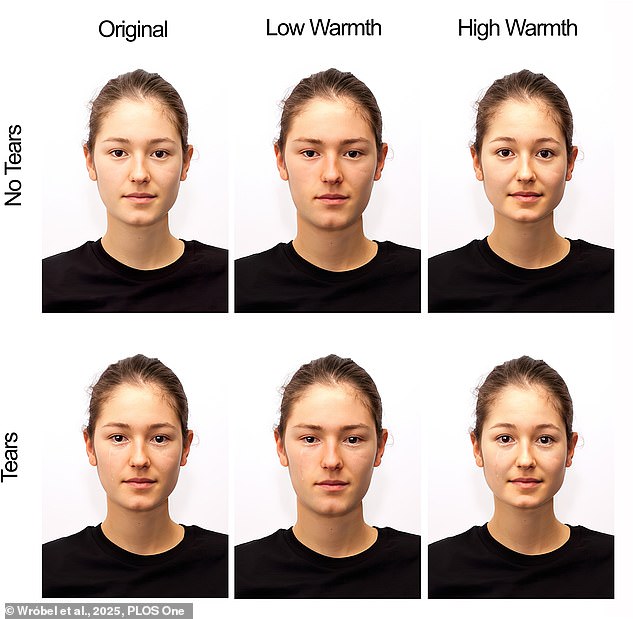Whether it’s forgetting to do the washing up, or accidentally buying an awful birthday present, there are often times when men annoy their partners.
But if you’re in the bad books, then scientists have simple solution for you – turn on the waterworks.
A new study has shown that so-called ‘crocodile tears’ are more believable when they come from men than from women.
Researchers asked thousands of participants to look at photographs that had been edited to appear tearful.
The faces varied in how much warmth they conveyed, with both male and female faces included.
People were asked to share their perceptions of the faces and how ‘honest’ they thought the tears were.
Analysis revealed crocodile tears were most believable from people least expected to cry.
This was mainly men, as well as women who ranked lower for ‘warmth’.

Turning on the waterworks might help men get out of a tricky situation – as their crocodile tears are more likely to be believable, a study shows (stock image)

Some of the images used in the study, showing women with varying levels of ‘warmth’ with and without tears. Participants were asked to say how ‘honest’ they thought the tears were
Writing in the journal Plos One the team, from the University of Lodz in Poland, said: ‘Emotional tears have been considered honest and sincere signals, most likely because they are difficult to shed on demand.
‘At the same time, people acknowledge that tears can be strategically used to manipulate others – so-called crocodile tears.
‘Hence, the question arises under what circumstances tears are perceived as honest signals and when as crocodile tears.’
They explained their results show that tears are not universally seen as ‘sincere’ because it depends on who is crying and in what situation.
‘Most importantly, we found that tears might be more socially beneficial when shed by people less expected to do so – for instance, by men or low-warmth people,’ they added.
‘Possibly, when men or low-warmth people tear up, which is quite unexpected, observers assume that there must be a genuine reason to do so.’
Previous research has provided clues on how to spot crocodile tears from the real thing.
Scientists found that those who fake remorse show a greater range of emotional expressions and swing from one emotion to the other very quickly – a phenomenon known as ’emotional turbulence’.

The phrase ‘crocodile tears’ comes from an old myth that the large reptiles cry while eating (stock image)
People faking remorse also speak with more hesitation, they found.
The phrase ‘crocodile tears’ comes from an old myth that the large reptiles cry while eating.
To determine whether there was any truth to this, researchers carried out experiments which involved feeding captive caimans and alligators.
They found that crocodiles really do bawl while banqueting – but for physiological reasons rather than from feeling sad.
The team said they believe the tears may occur as a result of the animals hissing and huffing, a behaviour that often accompanies feeding.
Air forced through the sinuses may trigger tear ducts, which empty into the eye, they said.












